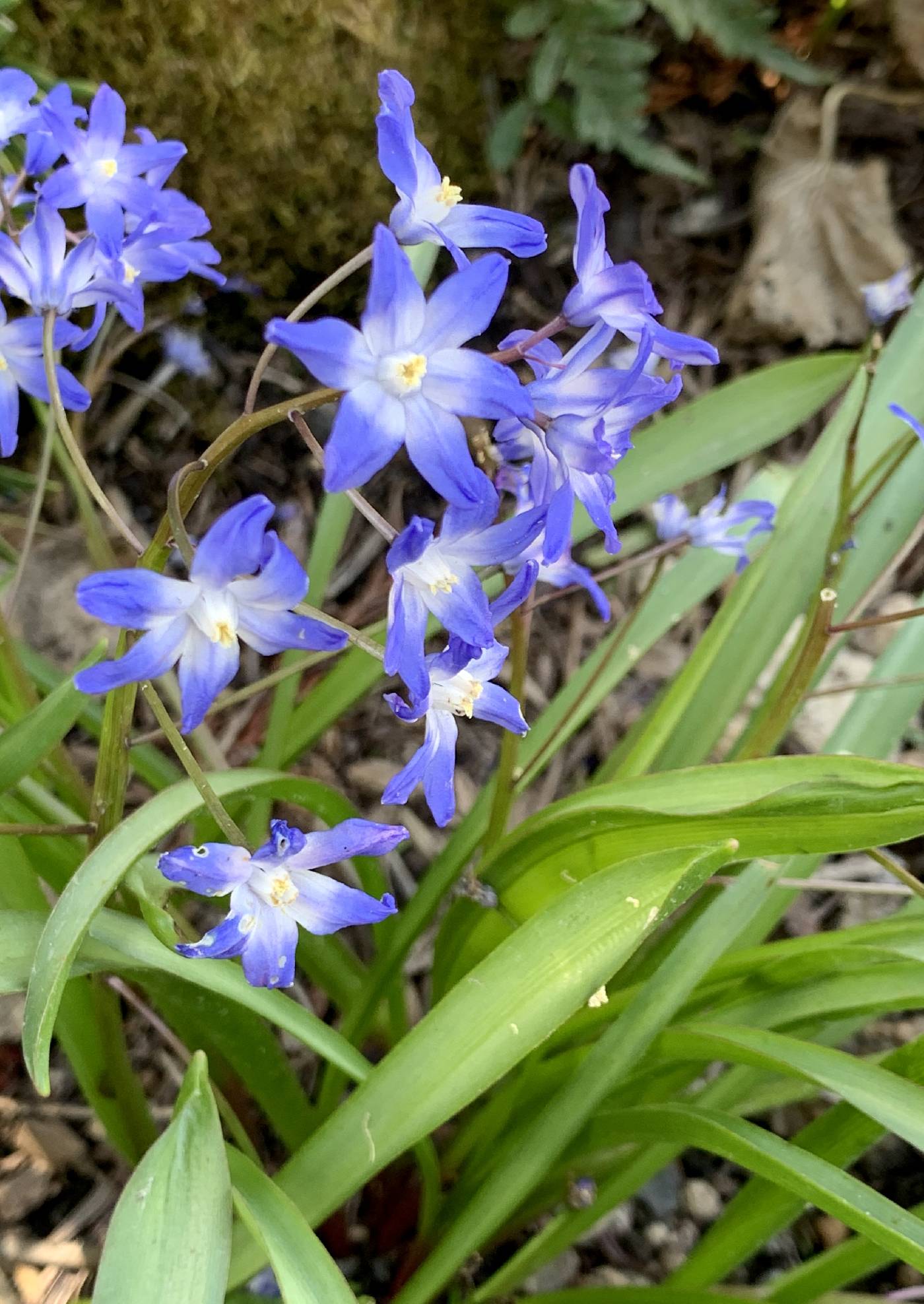Scilla
|
Family: Asparagaceae |
Herbs, perennial, scapose, from tunicate bulbs. Bulbs perennial, ovoid to globose, composed of free scales, progressively renewed annually; tunics brown. Leaves usually 2, basal, erect or spreading. Inflorescences racemose, open, 1-few-flowered; bracts none or 1 subtending each flower. Flowers: perianth blue or blue and white; tepals shortly connate to form urceolate tube, lobes spreading to reflexed; stamens 6; filaments inserted at apex of perianth tube, unequal, ± equaling anthers; anthers dorsifixed, introrse; ovary superior, 3-locular, septal nectaries present; style simple. Fruits capsular, subglobose, 3-lobed, dehiscence loculicidal. Seeds 3-18, globose to ellipsoid, not winged, elaiosomes present. x = 9. Chionodoxa, traditionally separated from Scilla because of its partially fused tepals, is very similar to species of Scilla subg. Scilla, especially S. bifolia Linnaeus, and hybrids between species of the two groups (×Chionoscilla allenii Nicholson) occur frequently. As a result, the species of Chionodoxa are sometimes included within Scilla subg. Scilla (F. Speta 1971, 1976).
Herbs, perennial, scapose, from bulbs. Bulbs perennial, ovoid to globose, composed of free scales, progressively renewed annually. Leaves few, basal. Inflorescences racemose or cymose, 1-many-flowered, sometimes bracteate; bracts none or 1, subtending each flower. Flowers: perianth usually blue or purple, rarely white; tepals distinct to base, each 1-veined; stamens 6; filaments inserted at base of perianth, distinct; anthers dorsifixed, introrse; pistil 1, 3-carpellate; ovary superior, 3-locular, septal nectaries present, ovules 1-10 per locule; style simple. Fruits capsular, 3-lobed, subglobose, dehiscence loculicidal. Seeds 3-30, not winged, globose to ellipsoid, elaiosomes present. x = 5, 6, 7, 8, 9, 10, 11, 12. A number of species of Scilla are commonly grown for their early, showy spring flowers, and present the possibility of becoming naturalized. In particular, S. bifolia Linnaeus, two-leaved squill, has been reported in Michigan (E. G. Voss 1972-1985, vol. 1) and northwestern Indiana (F. Swink and G. S. Wilhelm 1994). The summer-flowering hyacinth squill, S. hyacinthoides Linnaeus [Nectaroscilla hyacinthoides (Linnaeus) Parlatore], has been collected along roadsides near Mooringsport, Louisiana, and in Navarro County, Texas; it is readily distinguished from the spring-flowering species by its tall scapes (30-80 cm) with more than 40 flowers, and its more numerous leaves (8-10). F. Speta (1998, 1998b) drastically split Scilla, placing the Eurasian members into 10-12 mostly small genera on the basis of molecular (M. Pfosser and F. Speta 1999) and karyological (J. Greilhuber 1982; J. Greilhuber et al. 1981; F. Speta 1979) studies, as well as morphological data. Some of these segregate genera correspond to subgenera and sections recognized in other Eurasian treatments over the past 75 years (e.g., P. Chouard 1930; J. McNeill 1980; E. V. Mordak 1984), but others represent even finer splitting.
|

